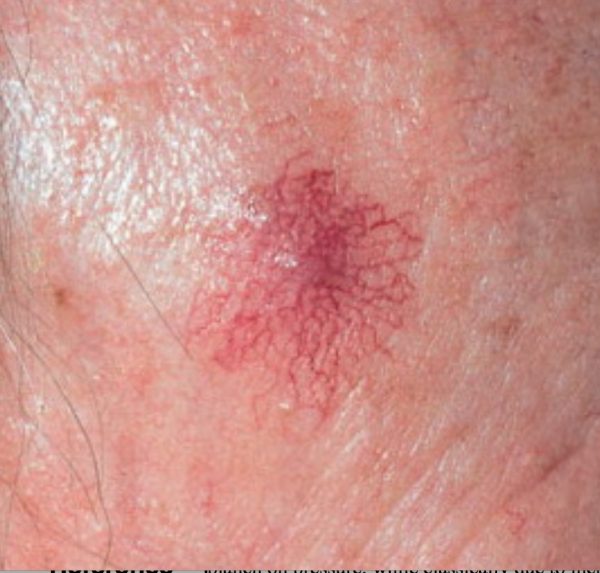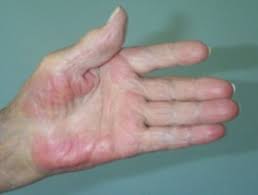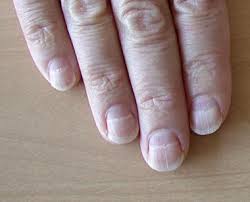Cirrhosis is the advanced stage of fibrosis in the liver occuring in the setting of various hepatic injuries. It has a wide range of cutaneous and mucosal manifestations. Usually, skin changes are associated with the severity of the disease.
Spider angiomas and other telangiectasias are frequently observed in patients with severe chronic liver disease. There are three mechanisms that may lead to these skin lesions:
- decreased hepatic metabolism of estrogen leading to hyperestrogenemia
- alcohol-induced vasodilatation
- altered central vasomotor control

Palmar erythema, also known as “liver palms”, is often located on the thenar and hypothenar regions; in same cases, it may also be distributed on the soles of the feet.

Dilated abdominal wall veins occur in the setting of advanced portal hypertension. When these are in a pattern radiating from the umbilicus, the appearance is termed ‘caput Medusae’.
Ecchymoses appear as aresult of altered production of prothrombin and deficiency of vitamin K.
Nail changes:
- Terry nails define white nail bed.

- Muehrcke nails are characterized by transverse white bands.

The explanation for these nail changes may be:
- altered digital blood flow
- soft-tissue overgrowth
- hypoalbuminaemia
Hair changes include sparse axillary, pubic and pectoral hair; also, males tend to develop a female pubic-hair pattern. The mechanisms include:
- increased production and decreased metabolism of estrogens
- decreased production and increased metabolism of testosterone.
Pruritus in cirrhosis is not as frequent and severe as in primary biliary cholangitis, sclerosing cholangitis and any other biliary tract obstruction. It usually appears during the night, on acral sites. The mechanism remains unclear. However, improvement after administration of drugs that block the action of opiates suggests that endogenous opiates may be important in the mechanism of this type of itch.
Also, new studies suggest that important correlations exist between intestinal and skin microbiome; in patients with cirrhosis, it seems to be an alteration of skin microbiome (in Gammaproteobacteria, Streptococcaceae, and Staphylococcaceae); fecal microbiomes of patients with cirrhosis had a higher relative abundance of Gammaproteobacteria than controls. These specific microbial taxa are associated with itching intensity and itch modulators, such as serum levels of BAs and autotaxin.
Jaundice (icterus) is first visible as a yellowish hue on the sclerae and soft palate, and then, it usually becomes generalized. It is due to hyperbilirubinaemia.
Bibliography
- https://www.derm101.com/
- Bolognia JL, Jorizzo JL, SchafferJV. Dermatology. Chapter 53- Dermatologic manifestations in patients with systemic disease. 4rd ed. Elsevier Saunders 2017, p 829-834
- Tony Burns, Stephen Breathnach, Neil Cox, Christopher Griffiths. Rook’s Textbook of Dermatology. Chapter 59. 42- Systemic Disease and the Skin. 9th ed. Blackwell Science2016. P 3035-3038
- Bajaj JS, Fagan A, Sikaroodi M. Alterations in Skin Microbiomes of Patients With Cirrhosis. Clin Gastroenterol Hepatol. 2019 Mar 21.
